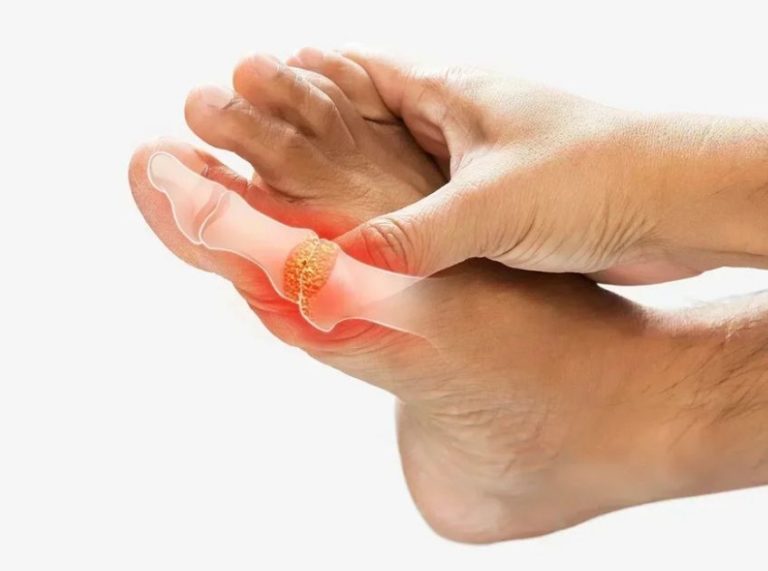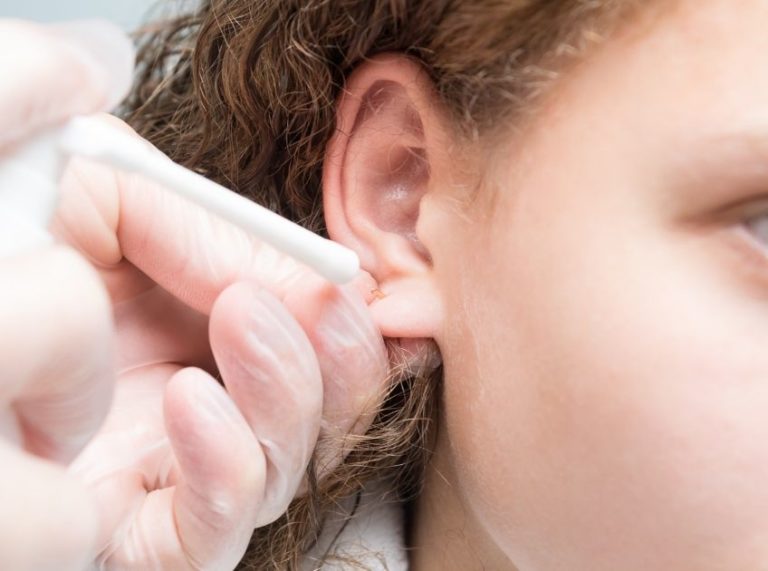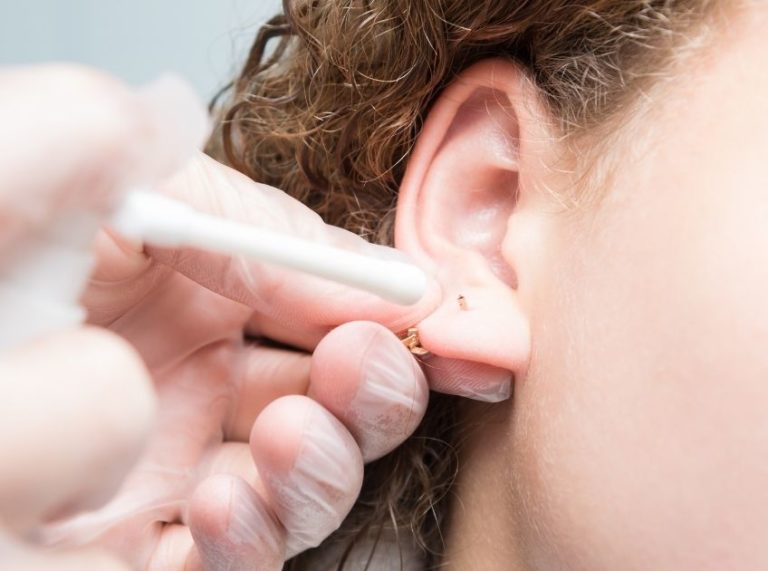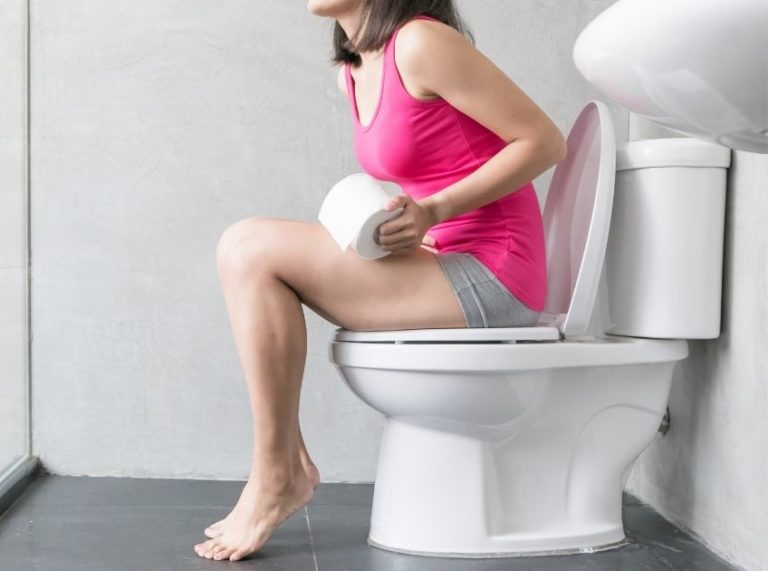
Important: This article is for informational purposes only. Please read our full disclaimer for more details.
Ear piercings are one of the most popular forms of body art across all age groups, but even a tiny piercing can lead to a painful infection if not cared for properly. An infected ear piercing can cause redness, swelling, discharge, and discomfort—and ignoring it can make the infection worse. The good news? Most mild infections can be treated effectively at home with proper care, hygiene, and patience. In this expert-written guide, you’ll learn how to recognize an infection early, treat it correctly, and prevent it from happening again.
Article Contains
- What Exactly Is an Ear Piercing Infection?
- How to Spot an Infection: Symptoms You Should Never Overlook
- Step-by-Step Home Treatment for Mild Piercing Infections
- When You Need a Doctor: Don’t Delay Professional Help
- Smart Preventive Tips to Avoid Future Piercing Infections
- What Science Says: Credibility Behind Piercing Aftercare
What Exactly Is an Ear Piercing Infection?
An ear piercing infection occurs when bacteria, yeast, or other pathogens enter the piercing site. This typically happens during the healing stage but can also occur months or even years later due to irritation or poor hygiene. The most common causes include using unsterilized equipment during piercing, touching the piercing with dirty hands, improper cleaning, or friction caused by tight or low-quality jewelry.
According to dermatologists, the majority of piercing infections are bacterial, especially those caused by Staphylococcus aureus (1). Earlobe piercings generally heal faster and are less prone to complications compared to cartilage piercings, which have reduced blood flow, making infections slower to heal and sometimes more serious.
How to Spot an Infection: Symptoms You Should Never Overlook
Recognizing early symptoms can prevent a minor issue from turning into a serious problem. Here are common signs of an infected ear piercing:
Early Symptoms Include:
- Redness and warmth around the piercing
- Mild swelling or tenderness
- Clear fluid or slight crusting
More Serious Infection Symptoms Include:
- Yellow or green discharge with foul smell
- Increasing pain, throbbing, or severe swelling
- Formation of a bump or blister around the piercing
- Fever or feeling unwell (in rare, severe cases)
In cartilage piercings, additional symptoms such as a hardened lump or extreme sensitivity may suggest perichondritis, a more serious condition that requires medical attention.
Step-by-Step Home Treatment for Mild Piercing Infections
If symptoms are mild and caught early, at-home treatment is often effective. Here is a dermatologist-approved approach:
1. Keep the Piercing In Place
Do not remove the jewelry unless advised by a professional. Removing it may cause the hole to close, trapping the infection inside. Instead, focus on cleaning the piercing to allow drainage and prevent further bacterial buildup.
2. Clean With a Saline Solution Twice Daily
A sterile saline solution helps reduce bacteria and promotes healing. You can purchase it or make your own at home by dissolving 1/4 teaspoon of non-iodized salt in one cup of warm distilled water. Dip a cotton pad into the solution and gently clean around the piercing twice a day. Avoid over-cleaning, as it can dry out the skin and slow healing.
3. Use Warm Compresses to Reduce Pain and Swelling
A warm compress helps improve blood circulation and supports the body’s healing response. Dip a clean cloth in warm saline water, wring it out, and apply it to the infected area for 5 minutes once or twice a day.
4. Apply an OTC Antibacterial Ointment (If Needed)
For bacterial infections, a thin layer of a topical antibiotic ointment may help. Dermatologists often suggest products containing bacitracin or mupirocin. Apply sparingly to avoid clogging the piercing.
5. Avoid Irritating Products
Stay away from rubbing alcohol, hydrogen peroxide, strong antiseptics, and fragrant lotions, as these can irritate the skin and delay healing. Hydrogen peroxide, in particular, can damage healthy tissue and prolong recovery.
When You Need a Doctor: Don’t Delay Professional Help
If the infection doesn’t improve within 48 to 72 hours of home treatment or symptoms worsen, it is essential to see a doctor. Immediate medical attention is needed if you experience:
- Severe or rapidly increasing pain and redness
- Pus with a strong odor
- Fever or swollen lymph nodes
- A hard lump forming around the piercing
- Infection in a cartilage piercing
Doctors may prescribe oral antibiotics for moderate to severe infections, especially those involving cartilage, as cartilage infections can lead to permanent deformity if left untreated. In some cases, a healthcare professional may recommend removing or changing the jewelry to medical-grade metals such as titanium or surgical steel.
Smart Preventive Tips to Avoid Future Piercing Infections
Proper care is the best defense against infection. Follow these preventive guidelines:
- Always choose reputable, licensed piercing professionals using sterilized equipment.
- Clean your piercing consistently throughout the healing period as advised by your piercer.
- Avoid touching or twisting jewelry unnecessarily, especially with unwashed hands.
- Do not sleep on your piercing or expose it to hair products, makeup, or unclean surfaces.
- Opt for hypoallergenic jewelry made of surgical stainless steel, titanium, or 14-karat gold.
- Replace ill-fitting or low-quality jewelry, as friction and allergic reactions can lead to infection.
What Science Says: Credibility Behind Piercing Aftercare
Research published in dermatology and microbiology journals shows that proper wound care and saline cleansing significantly lower the risk of infection by reducing bacterial load without damaging healing tissues (2). Studies also confirm that cartilage piercings carry a higher risk of infection due to limited blood flow, making early intervention crucial (3). Clinical experts emphasize avoiding harsh chemicals that disrupt the skin’s natural barrier, as this barrier is essential for healing.
Frequently Asked Questions (FAQ’S)
1. How long does it take for an infected ear piercing to heal?
A. Mild infections can improve within 2 to 3 days with proper home care and usually heal completely in 1 to 2 weeks. More severe infections, especially in cartilage, can take longer and may require medical treatment.
2. Can I change my earring while it’s infected?
A. It’s best not to change the jewelry while the piercing is infected, as this can worsen irritation and trap bacteria. Only switch jewelry if recommended by a professional, and preferably to hypoallergenic metals to reduce further irritation.
3. How can I tell if it’s an infection or an allergic reaction?
A. Allergic reactions commonly cause itchiness, clear discharge, and a rash around the piercing, especially with nickel-containing metals. Infection typically causes yellow or green discharge, pain, heat, and swelling. If unsure, a healthcare provider can determine the cause.
Infected ear piercings are uncomfortable but manageable, especially when addressed early. With proper cleaning, the right products, and awareness of warning signs, most mild infections can be treated safely at home. Prioritizing hygiene and choosing high-quality jewelry can prevent many infections altogether. If symptoms do not improve or worsen, seek medical care to prevent complications, especially for cartilage piercings. Your ear health and safety come first—and with the right knowledge, you can enjoy your piercing confidently and infection-free.















